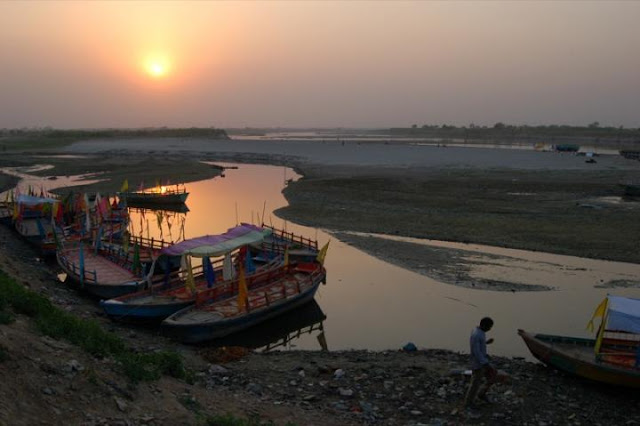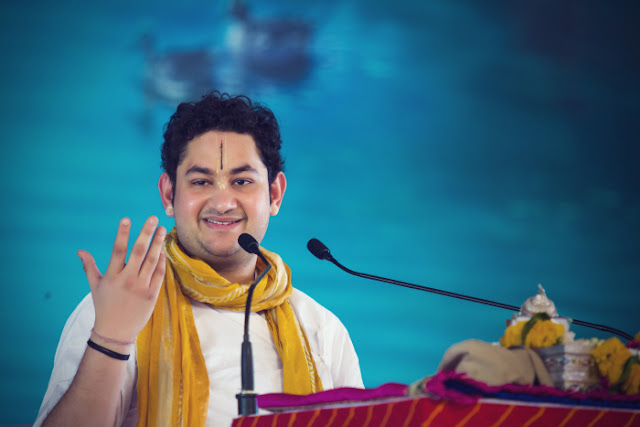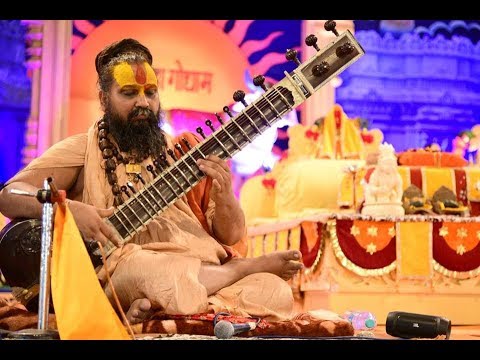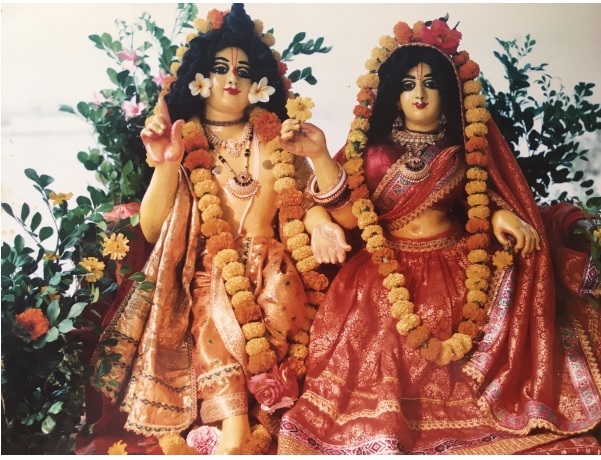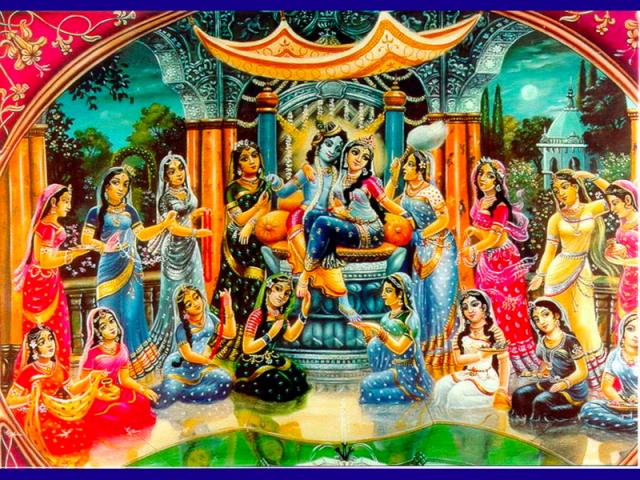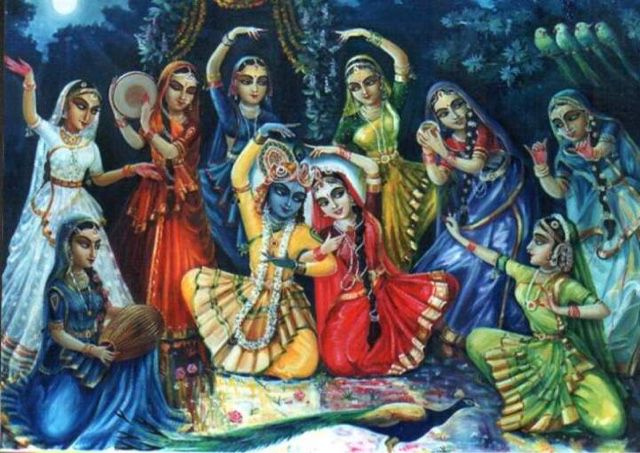VMA 2.44-46 :: Vrindavan is the celestial stage for the Divine Couple's dance of love
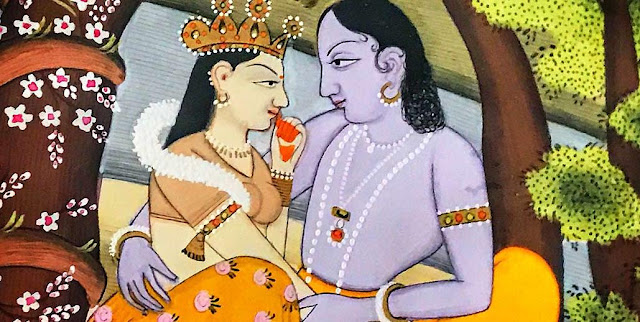
This is also a sandānatikā , or a group of three verses forming one syntactical sentence.. ekaṁ citra-śikhaṇḍa-cūḍam aparaṁ śrī-veṇī-śobhādbhutaṁ vakṣaś candana-citram ekam aparaṁ citraṁ sphurat-kañcukam| ekaṁ ratna-vicitra-pīta-vasanaṁ jaṅghānta-vastropari bhrājad-ratna-sucitra-śoṇa-vasanenānyac ca saṁśobhitam||2.44|| itthaṁ divya-vicitra-veśa-madhuraṁ tad gaura-nīlaṁ mithaḥ- premāveśa-hasat-kiśora-mithunaṁ dig-vyāpi-citra-cchaṭam | kāñcī-nūpura-nāda-ratna-muralī-gītena saṁmohayat śrī-vṛndāvana-cid-ghana-sthira-caraṁ raṅge mahā-śrīmati ||2.45|| anv-ālī-mukha-śabdake maṇimaye mīlan-mṛdaṅga-dhvanau protsāryaiva praviṣṭavaj javanikām utkīrya puṣpāñjalīm | atyāścarya-sa-nṛtya-hastaka-mahāścaryāṅga-dṛg-bhaṅgimot- tuṅgānaṅga-rasotsavaṁ bhajati me prāṇa-dvayaṁ kaḥ kṛtī ||2.46|| One wears a peacock feather crown, and the other has wonderfully braided hair. One's chest is decorated with sandalwood designs and the other wears a splendid bodice. One wears jewel-studded yellow garme
